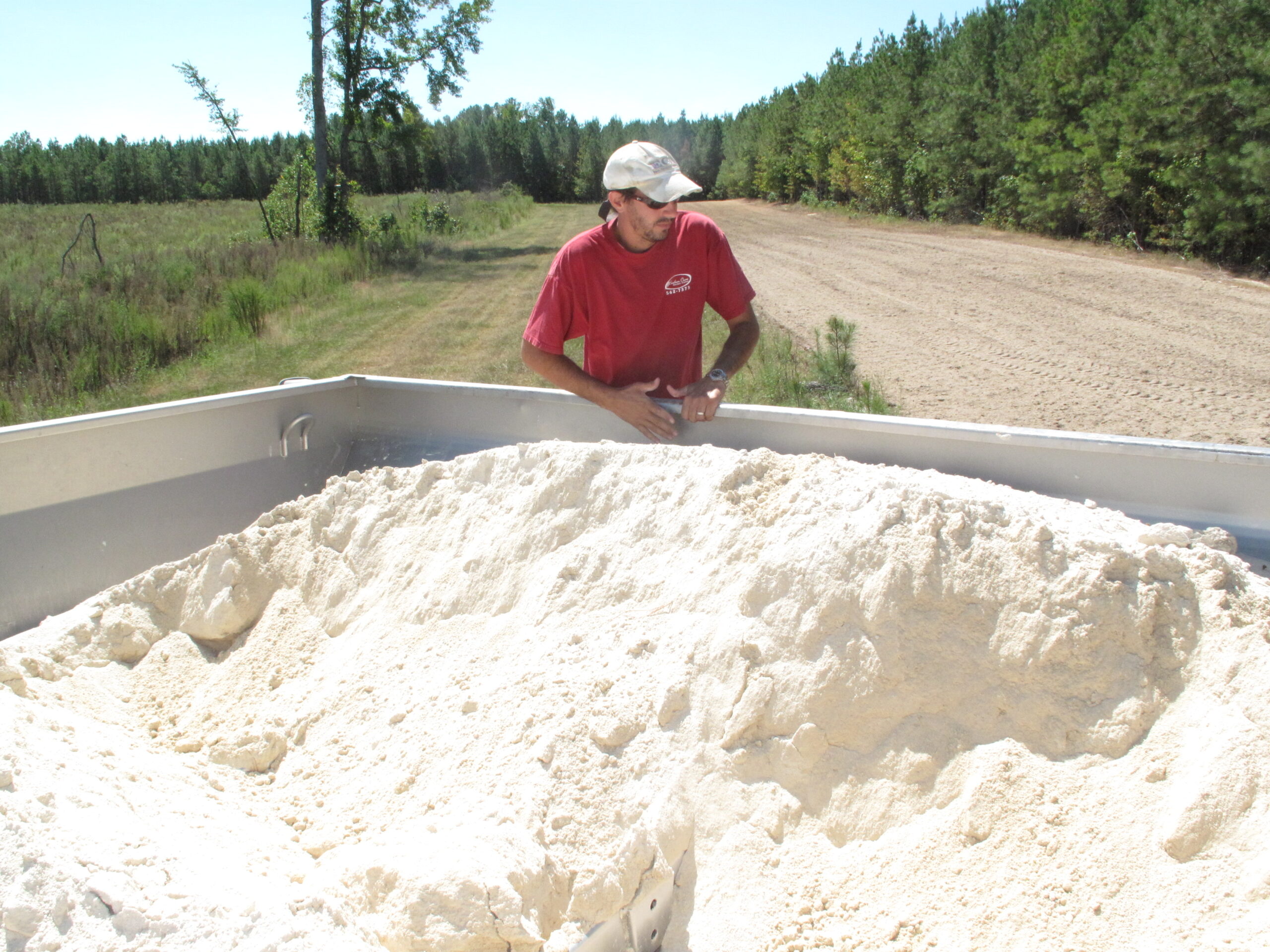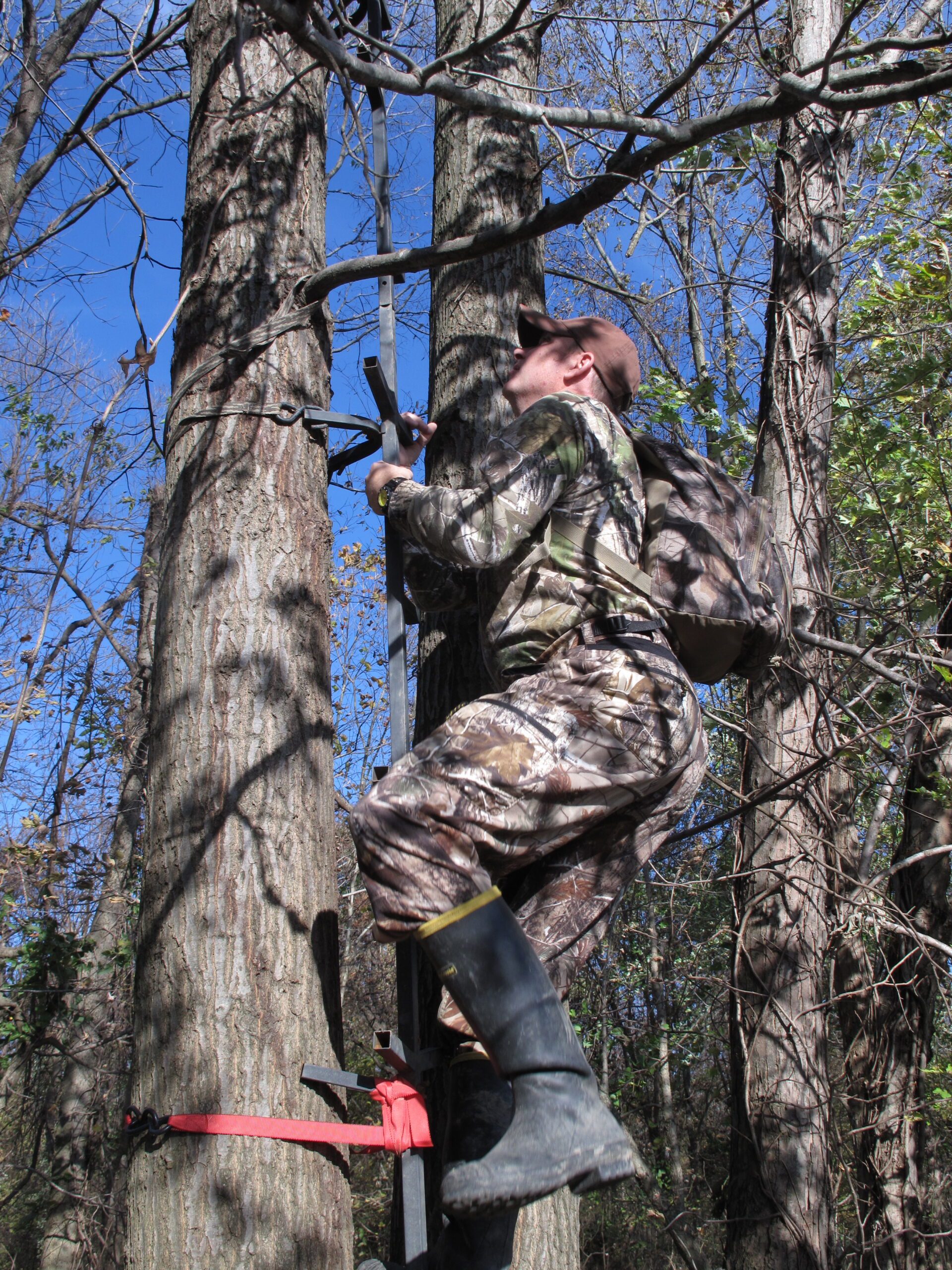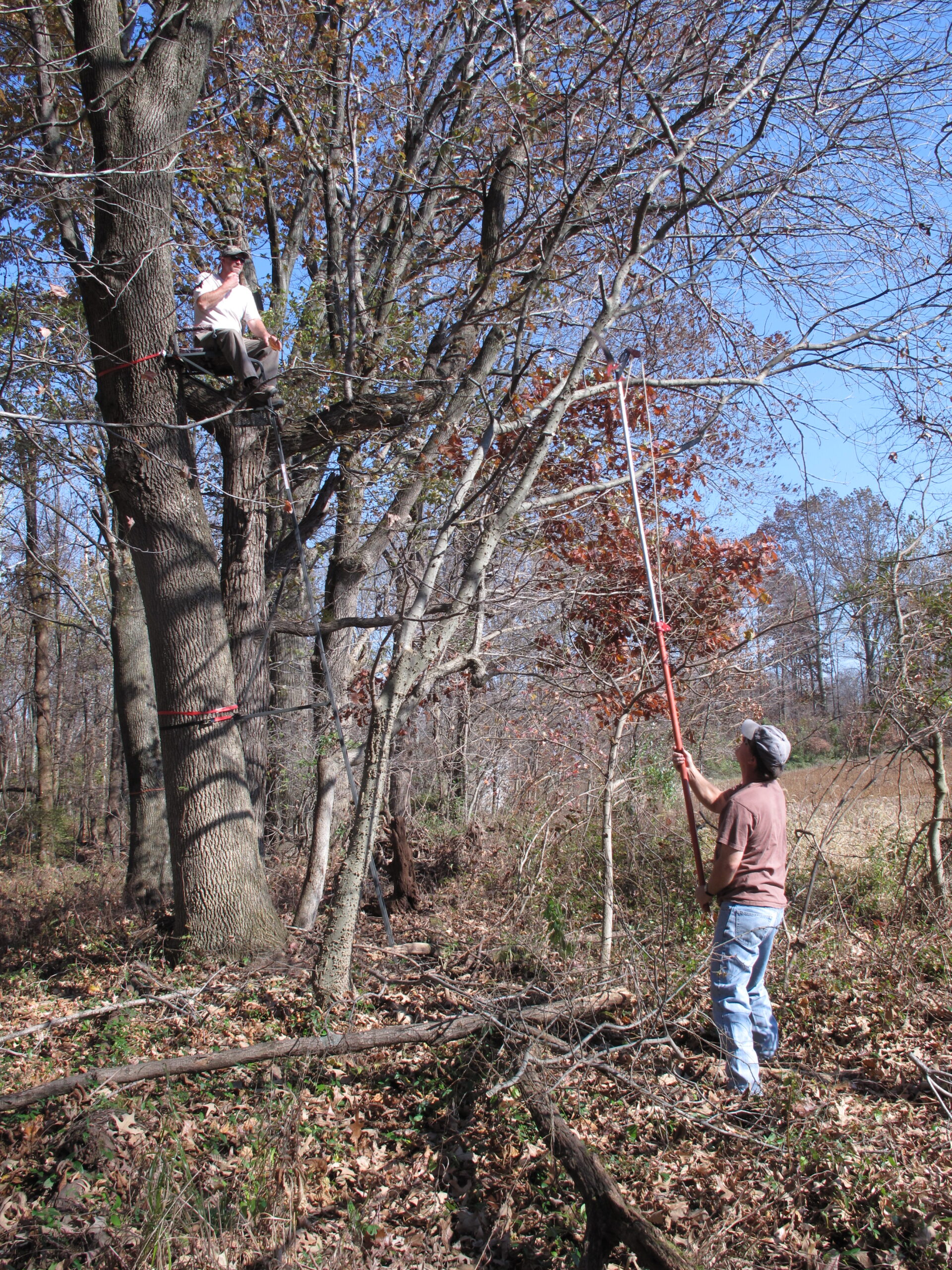Tactics
National Deer Association’s 5 Top Tips for Late-Season Deer Hunting
December 17, 2025 •iSportsman Staff
February 10, 2025
Doug Howlett
Hunting season may be over, but that doesn’t mean it’s time to simply stash away your gear and forget about it until next fall. In fact, that could be one of the worst things you can do. Now is actually the best time to start getting ready for next season—while everything that didn’t work out right or go the way you hoped from this season—is still fresh on your mind. From organizing your gear and replacing worn out or lost items, to maintaining important gear like guns and stands, the work you put in now can put you steps ahead on making next season your most successful yet. Here are six things you need to get started on.

Don’t wait until late summer to spread lime. Lime can be put down anytime with great benefits to your soil’s pH.
For many of us, the time we spent hunting this past season also meant we put a lot of other things off that needed to be done at home, work or even with our outside-of-hunting personal relationships. The rush to start checking of items on those overdue lists sometimes means we just dump our gear in a pile in the garage or closet and conveniently forget about it until we are weeks (sometimes even days) from next season. Well, don’t do that. That’s a terrible mistake.
Now is the time to go through everything and get it organized, while your memory is still fresh of what needed fixing or replacing. First, wash your camo clothing in a scent free wash such as Wildlife Research Center’s Scent Killer or Dead Down Wind’s 3D+ Laundry Detergent. Then store it in a scent-free bag or tote to protect it from other odors in your house or storage room. Wash boots free of mud and store them the same way. I like to place cedar chips and pine needles in plastic bags with small holes punched in them and throw the baggies in with the clothes and boots to help encase them in a natural scent during storage.
For electronics, ensure they are in working order and, for those that are, remove the batteries to prevent them from going bad during the year and leaking on internal contacts and circuitry. Sharpen knives now and properly store them so they will be ready to go when you need them. Clean bows, firearms and optics and store them safely away from moisture and radical changes in temperature. Toss anything that is broken or doesn’t work and make a list of those items that need replacing. Did you realize during the season that you could use an item you don’ t even have like a small limb cutter, a rope for pulling items into your stand or a new scale for weighing your deer? Get it now. Now is when it will be cheaper and you’ll have it ready to go and use well ahead of time. Organize everything into bins that will be easy to load in your truck on a moment’s notice when next season arrives.

Take stands down or at the very least, replace worn straps now so you’re not doing it at the last minute next season.
It may seem like a pain, particularly if you have numerous stands set up on your property, but take the time to pull them down and store them away from the elements during the off-season, particularly with your hang-ons. Sunlight, falling limbs and trees, rainfall, snow, nibbling animals and even insects can all hasten wear and damage to a stand. These things aren’t cheap, so protect your investment, get a friend or two to help, and take a day to remove and store portable stands.
Ladder stands can be bulky and more of a hassle to move, but you should store these as well. At the very least, remove seat cushions and store them, replace any straps that are worn or weakened and lightly loosen straps so they don’t cause the stand to bite into the tree and over time, fuse with it, as the tree grows. You’ll never get that thing moved if you need to place it elsewhere should that happen.
Now is also a good time to mark down where you want to hang a stand for next season and if you’re going to leave it in the woods, at least go ahead and move it where it needs to be moved to. You don’t want to be in the woods weeks before the season starts, making a racket and hanging stands.
Remember that shooting lane you realized you should have cut earlier in the season when the deer stepped out and you didn’t have a clear shot, or that trail that would have provided easier and more silent access to your favorite hunting spot had you remembered to cut back the limbs growing across it? Well, go do that now. Do it before it gets hot outside, leaves and weeds start growing, insects start biting and you simply forget about it.
Any type of trail work or cutting that must take place in the woods is easier to do before the woods are choked with vegetation and summer temperatures soar. You also don’t have to worry about disturbing deer right before the season starts. Who cares if you spook something 8 months before the next season begins. Sure, you may still need to roll through and clean it up or cut a downed tree toward the end of summer, but you can get the heavy lifting out of the way now so that work will be more quickly and quietly done right before the new season begins.
Keep those trail cams powered up and snapping for a while. Certainly, until all of the antlers have dropped in your area. I like to keep them running all season. It keeps me informed on deer (and any human, authorized or unauthorized) on my property throughout the year. Hang them along food plots planted with turnips, kale and other tasty cold-weather brassicas, or if you’re allowed to bait after the season, near a feeder or a spot spread with some Big & J attractants or Primos Swamp Donkey.
Combine your photo surveillance with a little post-season searching for sheds. Look in the same spots deer are apt to find winter nutrition and then walk well-worn trails between those places and likely bedding areas. You’re not worried about busting survivors from cover now, so plunge into those thick nasty spots where bucks bed and give them a good look.
While you’re in there, look for where deer are bedding. Get down at a deer’s eye level and examine how far he can see and which way prevailing winds might carry scent into the cover. Note which trails they are using to enter and exit bedding areas. Follow those trails to see if they take you to food sources on your property or if they wander across the boundary. If it’s the latter, you may want to consider additional food plots or other land management measures that will keep bucks from wandering when the season rolls back around. Oh, and write it down, you’ll forget a lot of this later, but this intel will help you as you determine stand placement and strategy as the rut rolls back around.

Hit the woods with a buddy and clear trails and shooting lanes that were a problem during the reason season.
Our hunting plots did terrible this past year, but we realized short into the season, we were to blame. We planted them a little late, and didn’t get lime and fertilizer put down as well as we should’ve when we ran into some issues with our equipment. We’re not going to make that mistake again and you shouldn’t either. Even if you only plant your food plots for the fall and don’t plant in the spring, now is the time to take soil samples, have them tested through your local cooperative extension office and go ahead and get lime down according to recommendations now. Putting lime down can be done anytime and doing it now will give the soil’s pH time to adjust and get closer to where it should be by the time you plant—spring or fall.
Want to finally take that hunt you’ve always dreamed of and finally saved up for. If you haven’t already booked it, you might be running behind. Top outfitters don’t have to give free hunts to YouTubers or worry about advertising much as many get so much repeat business, their hunts book up as soon as hunters leave. But there are still plenty of great hunts available, so do your research now and start calling outfitters or booking agents in the business who can help you set it up. Wait until the summer to try and book, you’ll likely have to squeeze into their schedule at a time that may not be best, the best dates will be taken if they have any availability at all or you might wind up having to settle for a less-than-stellar outfitter who has a lot of open dates because he isn’t drawing repeat business, a warning sign for sure.
If you’re dreaming of hunting a big buck or western game destination that requires nonresidents to draw a hunt tag, now is when you want to check on requirements and application deadlines as well. Kansas, Iowa and Illinois all require nonresidents to draw for coveted firearms whitetail tags, as do portions or units of other states. Do your homework now and don’t let a missed deadline be the reason you fail to score on that hunt of a lifetime.
December 17, 2025 •iSportsman Staff
December 17, 2025 •iSportsman Staff
